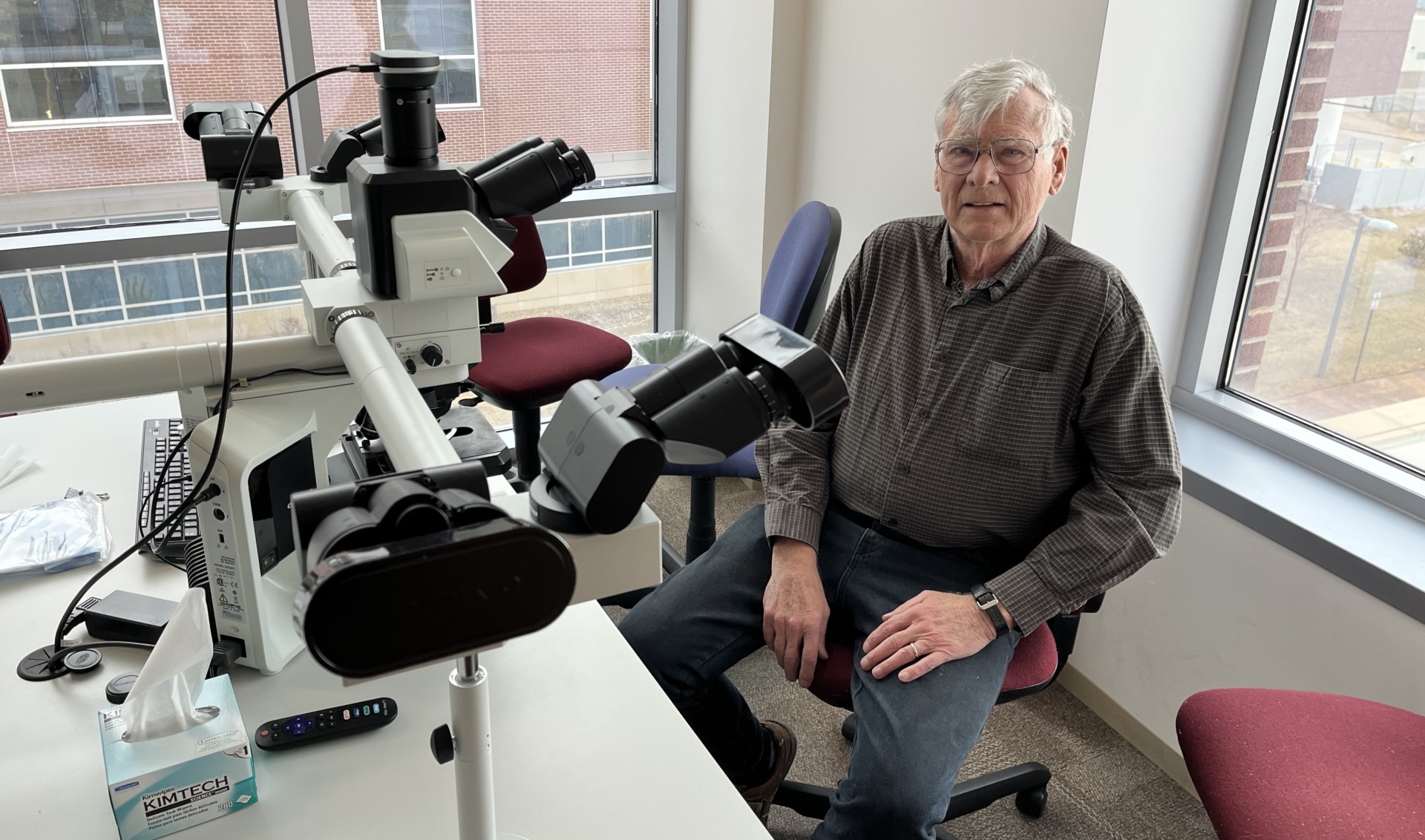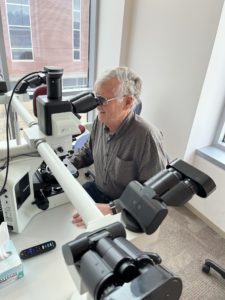
Dr. Terry Spraker in the Diagnostic Medicine Center
When asked what memories stick out the most from his five decades working at Colorado State University, Dr. Terry Spraker lists discovering the first case of chronic wasting disease in an elk, working with a young pathologist named Tony Frank and the burning of Old Main in 1970.
Spraker, a three-time CSU alumnus and professor in the Department of Microbiology, Immunology and Pathology, is celebrating his 50-year employment milestone in 2023, and he recently discussed his winding career path, which took him to San Diego, Alaska and Washington, D.C.
As a young boy growing up in Casper, Wyoming, Spraker remembers helping a veterinarian deliver a calf.
“I always wanted to be a vet or work with animals somehow,” he said, adding that he took some ribbing for coming to CSU in the late 1960s after two years of junior college. “Coming from Wyoming, it was a bit of a disgrace to come this far south.”
Shadowing a mentor
After earning his B.S. degree in 1970, he began pursuing his D.V.M., working toward a career in pathology. One of his mentors was Chuck Hibler, a parasitologist in the Veterinary Diagnostic Laboratories.
“He really had a big influence on me, and I started following him around,” Spraker recalls, adding that Hibler hired him as a research assistant.
He also vividly remembers when CSU’s first academic building, Old Main, burned down in 1970 in a suspected arson case that was never solved. Spraker says that just before the burning, members of the activist group Students for a Democratic Society were threatening to burn down the Glover Building, which was home to the veterinary hospital at the time. He recalls that he and fellow veterinary medicine students took shifts patrolling the building with a baseball bat at night to protect it.
In the 1970s, Spraker spent a year in San Diego, performing necropsies on animals that died of natural causes at the San Diego Zoo, Sea World and San Diego Wild Animal Park, a move that he calls “one of the best things I could have done, career-wise.”
 ‘Go far away’
‘Go far away’
After getting his Ph.D. in 1979, he wanted to stay at CSU as a faculty member, but the pathology department head told him that with three CSU degrees, he had “too much blood” at the University and that Spraker should “go far away for a couple of years.” So he went to Washington, D.C., and spent two years splitting his time between coursework at the Armed Forces Institute of Pathology and doing a residency at the Smithsonian’s National Zoo.
He returned to CSU and was hired as a pathologist, but Spraker says it wasn’t until CSU Chancellor and former CSU President Tony Frank became head of the Department of Microbiology, Immunology and Pathology that he was promoted to a tenure-track faculty position.
In the mid-1980s Spraker began spending his summers working on pathology projects with the National Oceanic and Atmospheric Administration, studying marine mammals like sea lions and fur seals in Seattle and Alaska. NOAA also hired him to perform necropsies on marine mammals after the Exxon Valdez oil spill in 1989.
Chronic wasting disease
In addition, Spraker worked with Colorado Parks and Wildlife to study a mysterious cause of death in deer. After observing that deer were chronically wasting away from what was then believed to be a loss of stomach protozoa, his research group began calling it “chronic wasting disease.” Spraker was the first to discover CWD in an elk, in Rocky Mountain National Park.
Looking back, he probably exposed his three sons to his line of work at too young of an age, he says with a laugh, because two became engineers and one is a nurse. During a kindergarten parent’s day, he noticed that the teacher was very standoffish.
“I found out later that when she had asked my son what I did for a living, he said, ‘My dad makes dead animals deader.’”
CSU Milestones
Colorado State University annually celebrates employees achieving a decade of service of more. See the complete list at giving.colostate.edu/celebrate-colorado-state-university.